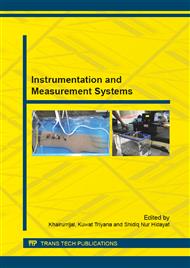p.145
p.149
p.157
p.161
p.165
p.170
p.174
p.179
p.183
Application of Radon Isotopes to Determine Permeable Zones in Rajabasa Geothermal Field, Indonesia
Abstract:
This study aims to determine permeable zones (i.e. fault or fracture zones) in the Rajabasa geothermal field using radon isotopes. Radon concentration of soil gas was measured by Scintrex Radon detector RDA 200 consisting of 123 measurement station. The measurement site spacing are between 200 m and 350 m. The Radon concentration was classified based on a statistical approach, i.e. low, high and very high. Very high value of Radon concentration, called Radon anomaly, associated with permeable zones. From the Radon anomaly contour map, a 2D Radon migration from the source to the surface was modelled by means of numerical simulation. Finally, the Radon contour map was overlaid with the surface geological map and the resistivity contour map in the area of study. It suggests that the Radon anomaly correlates with the location of permeable zone in the centre part of the study area i.e. mud pool manifestation at the Kunjir and the Cugung (Bulakan) fumarole. Based on numerical simulation, the width of the fault is 2,800 m; velocity of fluid is 0.08 m/s and the Radon concentration is 860,000 Beq/m3. The resistivity contour map results low resistivity value of 0 Wm – 100 Wm indicating the conductive zone coincide with permeable zones based on Radon measurements. Furthermore, the peak of the profile curve of Radon concentration could be an indication of fault systems in this area.
Info:
Periodical:
Pages:
165-169
Citation:
Online since:
July 2015
Authors:
Keywords:
Price:
Сopyright:
© 2015 Trans Tech Publications Ltd. All Rights Reserved
Share:
Citation:


